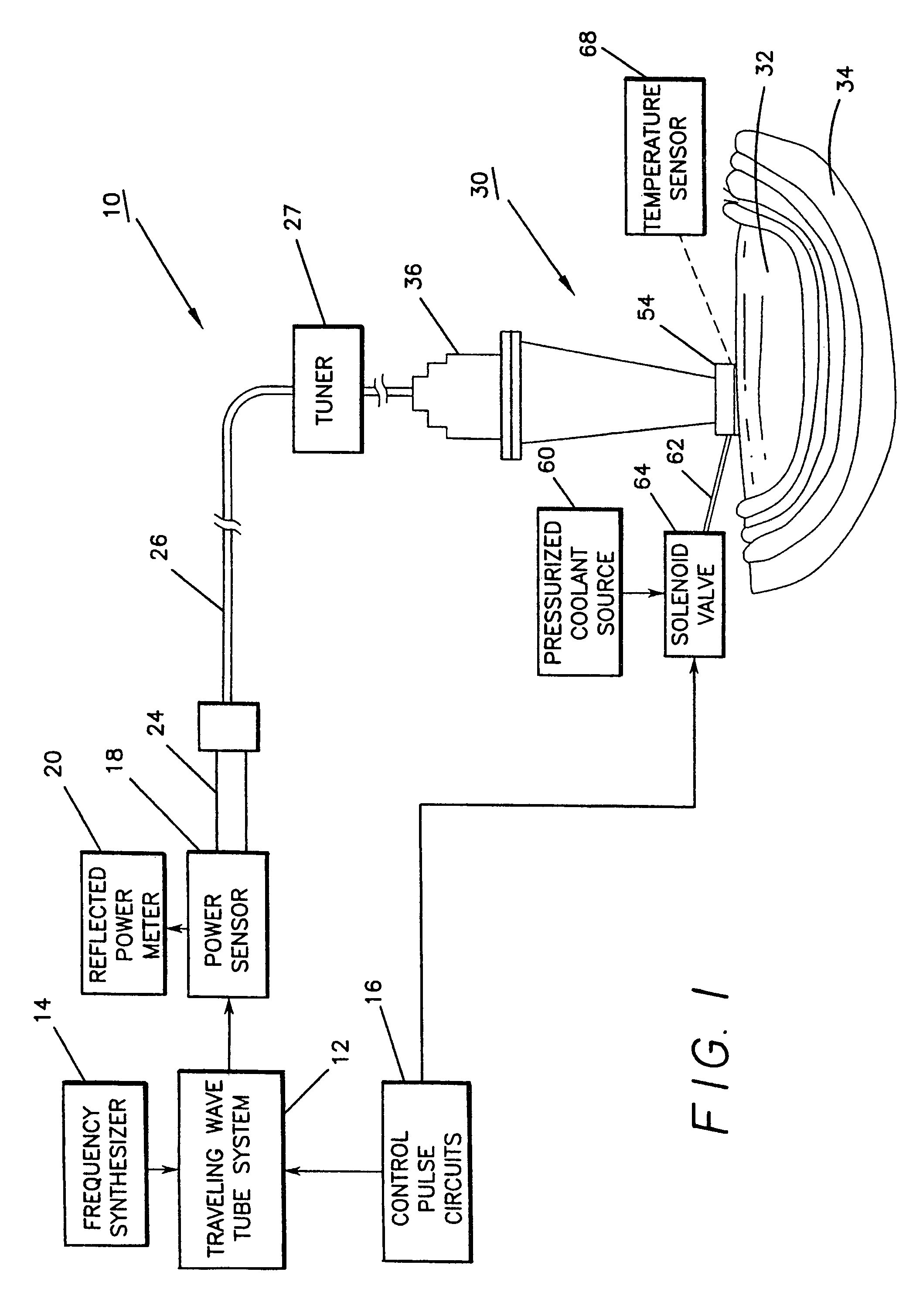Method and apparatus for treating subcutaneous histological features
a technology of subcutaneous venous conditions and histological features, applied in the field of pathological changes in subcutaneous histological features, can solve the problems of excessive hair growth, large hair growth, and inability to address the microwave energy potential of subcutaneous venous conditions and skin disorders in similar detail
- Summary
- Abstract
- Description
- Claims
- Application Information
AI Technical Summary
Benefits of technology
Problems solved by technology
Method used
Image
Examples
Embodiment Construction
A system in accordance with the invention, referring now to FIG. 1, is depicted in an example intended for use in hair removal, the treatment of spider veins and other skin disorders. This configuration includes a hand-held applicator that is suitable for potential use at any frequency within a suitable range, as well as for measurement of skin or tissue properties. Such a system can be used for treating any of a variety of skin disorders, including hirsuitism, telangiectasia, pigmented lesions and the like. It will be apparent to those skilled in the art that where such degrees of versatility and usage in different possible applications are not required, a simpler and less expensive system will often suffice. In addition, if a manually moveable applicator head is not required, the system can be simplified in this respect as well. In the most rudimentary example, a monofrequency unit with means for adjusting dosage driving a fixed applicator head may be adequate.
Referring to FIG. 1,...
PUM
 Login to View More
Login to View More Abstract
Description
Claims
Application Information
 Login to View More
Login to View More - R&D
- Intellectual Property
- Life Sciences
- Materials
- Tech Scout
- Unparalleled Data Quality
- Higher Quality Content
- 60% Fewer Hallucinations
Browse by: Latest US Patents, China's latest patents, Technical Efficacy Thesaurus, Application Domain, Technology Topic, Popular Technical Reports.
© 2025 PatSnap. All rights reserved.Legal|Privacy policy|Modern Slavery Act Transparency Statement|Sitemap|About US| Contact US: help@patsnap.com



